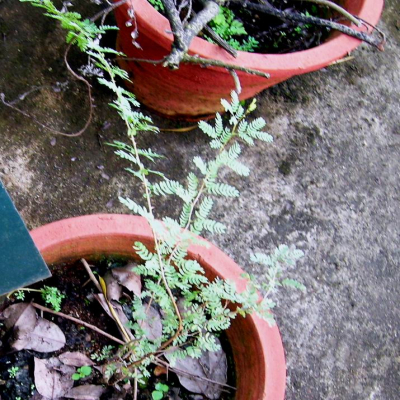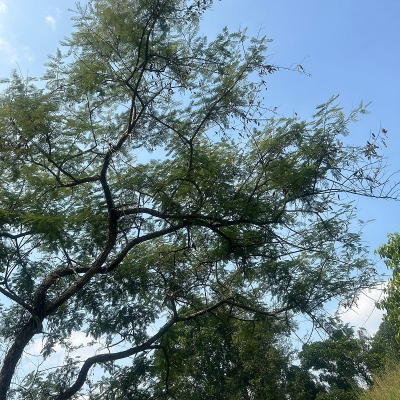Distribution and habitat: Throughout India. It can withstand drought and flooded conditions and prefers alkaline to neutral soil condition.
Botany: A moderate sized tree upto 10 m in height with dark brown or longitudinally, fissured rough bark and reddish brown heart wood, branchlets slender, pubescent when young.
- Leaves: Bipinnately compound, main rachis downy often, with glands, stipular spines highly variable, often whitish, straight and sharp, pinnate 4-9 pairs, leaflets sub sessile, 10-25 pairs, nearly glabrous.
- Flowers: Golden yellow in globose heads, peduncles axillary in fasicles of 2-6.
- Fruits: Stalked, compressed, moniliform pods with constrictions between the seeds.
- Seeds: 8-12 per pod.
Properties: Aphrodisiac, anthelmintic, diuretic, antidermatic, antirheumatic, expectorant, astringent, roots and methanolic extract of leaves have antiviral properties
Chemical constituents: Leaves: ethyl gallate and γ -sitosterol, D-pinitol. Bark contains high concentration of tannins, epigallocatechin, methyl gallate, gallic acid, umbelliferone, (þ)-mollisacacidin, niloticane . Gum contains sugars like D-galactose, L-arabinose, L-rhamnose, arabinogalactan protien, tannic acid, cresol and methylsalicylate. Roots contain hentriacontane, lapachol, n-hentriacontanol, sitosterol, octacosanol, botulin and ß-amyrin4, Polygalloyltannin etc.
Uses: Haemorrhages, ulcers, chronic dysentery, skin diseases, burning sensation, bronchitis, leprosy, oral ulcers, odontopathy, pneumonosis, internal fevers and general debility.
Propagation: Seeds, stem cuttings



